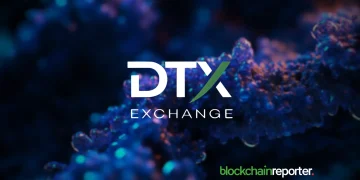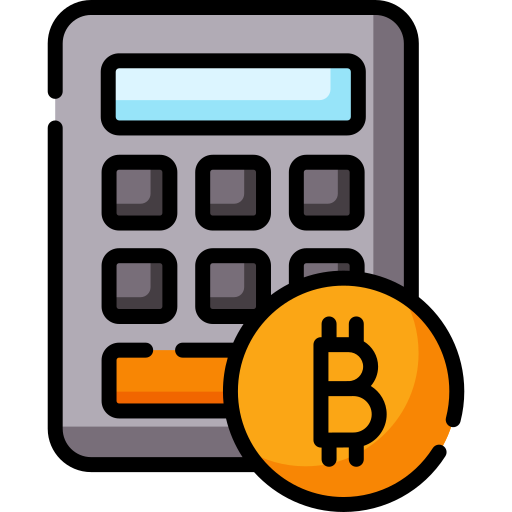Ethereum is making headlines again as transaction fees drop to an all-time low, opening the door for wider adoption. With ETH stabilizing around $2,700 and bulls eyeing a push past $2,850, the top Layer 1 blockchain could be gearing up for another significant move. Reduced fees often mean more user activity, and with Ethereum’s dominance in DeFi and NFT markets, the potential for further expansion is undeniable.
Artificial Super Intelligence Alliance (ASI) is also in the spotlight. AI-driven cryptocurrencies once dominated the market, and Fetch.ai (FET) was at the forefront. After hitting an all-time high of $3.48, it has since plummeted to $0.78, marking a 77.53% decline. However, the AI sector remains a powerhouse in blockchain innovation, and the next wave of AI-crypto adoption could see a massive rebound.
Amid these shifts, one emerging project is capturing investor interest: Qubetics ($TICS). Unlike traditional cryptos, Qubetics isn’t just another blockchain—it’s designed for seamless interoperability between networks. By addressing the fragmentation problem in blockchain finance, Qubetics has the potential to reshape the digital economy and become the next crypto to hit $1.
Qubetics: The Interoperable Blockchain Bridging the Gap
Blockchain technology is rapidly evolving, but one major challenge remains: interoperability. Most blockchains operate in isolation, creating barriers for businesses, developers, and users trying to move assets or data between networks. Qubetics solves this problem by enabling seamless cross-chain transactions, making it an essential player in the future of blockchain-based finance.
Imagine a global e-commerce business that wants to accept multiple cryptocurrencies without the hassle of complex integrations. With Qubetics’ interoperable framework, payments can be processed effortlessly across different chains, ensuring speed, security, and lower costs for both merchants and customers. Similarly, a freelancer working with international clients can receive payments in various cryptos without worrying about conversion delays or high fees.
Qubetics’ presale success proves that investors are paying attention. Currently in its 22nd stage, the project has sold over 481 million tokens to more than 20,600 holders, raising an impressive $13.4 million. $TICS tokens are priced at $0.0807, and with its innovative tech, it’s only a matter of time before it gains even more traction.
Unlike most presales, Qubetics isn’t just about speculation. The project’s interoperability solutions are designed for real-world adoption. Analysts highlight its potential for massive ROI, especially as it moves closer to its mainnet launch.
- $TICS at presale end: $0.25 (209% ROI)
- $TICS post-presale: $1 (1138% ROI), $5 (6093% ROI), $10 (12,286% ROI)
- $TICS at mainnet launch: $15 (18,480% ROI)
This kind of growth potential makes Qubetics a prime contender for the next crypto to hit $1.
Ethereum: Can Lower Fees Spark the Next Bull Run?
Ethereum has always been a dominant force in crypto, but high gas fees have often been a deterrent for mainstream adoption. However, with transaction fees hitting an all-time low, there’s renewed excitement surrounding Ethereum’s ecosystem.
Lower fees mean more accessibility. DeFi platforms, NFT markets, and on-chain applications will likely see increased activity as costs drop. For example, small-scale traders who previously avoided Ethereum due to high fees may now find it more profitable to engage in swaps, staking, and lending.
With Ethereum hovering around $2,700 and bulls targeting $2,850, the question remains—can ETH sustain its momentum? If Ethereum breaks past this key resistance, it could reignite the altcoin market and bring fresh liquidity into the space.
The broader Ethereum ecosystem also continues to expand. The network’s shift to proof-of-stake (PoS), ongoing Layer 2 development, and institutional adoption are creating a strong foundation for long-term growth. If fees remain low and demand rises, Ethereum could once again lead the charge in the next bull cycle.
Artificial Super Intelligence Alliance (ASI): Is AI Crypto Making a Comeback?
The AI-crypto narrative took the market by storm, with Fetch.ai (FET) leading the charge. At its peak, FET hit $3.48, but a 77.53% decline brought it down to $0.78. Despite this downturn, AI remains one of the most transformative sectors in blockchain.
Artificial Super Intelligence Alliance (ASI) represents a fusion of blockchain and artificial intelligence, aiming to create self-learning networks that power decentralized automation, machine learning, and predictive analytics. While prices have taken a hit, the long-term potential of AI-driven blockchain projects remains strong.
Take decentralized finance (DeFi), for example. AI integration can optimize trading strategies, detect fraud, and streamline financial services, making blockchain-based banking smarter and more efficient. Similarly, in supply chain management, AI-driven blockchains can enhance transparency and automate logistics.
While FET and other AI tokens are still recovering, the sector as a whole is far from over. Many believe that AI-powered blockchain solutions could be the next major disruptor in crypto, potentially bringing ASI back into the spotlight.
Final Thoughts
Qubetics, Ethereum, and ASI each offer unique value in the crypto space. Qubetics is revolutionizing interoperability, Ethereum is gaining momentum with lower fees, and ASI remains a force in AI-driven blockchain solutions.
As the market evolves, these projects are positioning themselves for long-term success, with Qubetics standing out as the next crypto to hit $1. Investors looking for high-potential blockchain projects should keep a close watch on these emerging leaders.
For More Information:
Qubetics: https://qubetics.com
Telegram: https://t.me/qubetics
Twitter: https://x.com/qubetics
FAQs
1. Why is Qubetics being called the next crypto to hit $1?
Qubetics is solving a major problem in blockchain: interoperability. With real-world use cases, increasing adoption, and presale success, it has strong momentum toward $1.
2. How does Ethereum’s low transaction fee impact its future?
Lower fees increase accessibility, drive adoption, and boost DeFi and NFT activity, potentially leading to an Ethereum price surge.
3. Can AI-driven cryptos like ASI and FET make a comeback?
AI-crypto remains one of the most promising sectors, and as adoption grows, tokens like ASI and FET could regain strength.
4. How can investors participate in the Qubetics presale?
Investors can buy $TICS at $0.0807 before the presale ends. With mass adoption ahead, early buyers are positioning themselves for potential exponential gains.
5. Should investors diversify between Qubetics, Ethereum, and ASI?
Yes. Qubetics offers blockchain interoperability, Ethereum dominates DeFi and NFTs, and ASI represents AI’s role in crypto, making a balanced portfolio.























